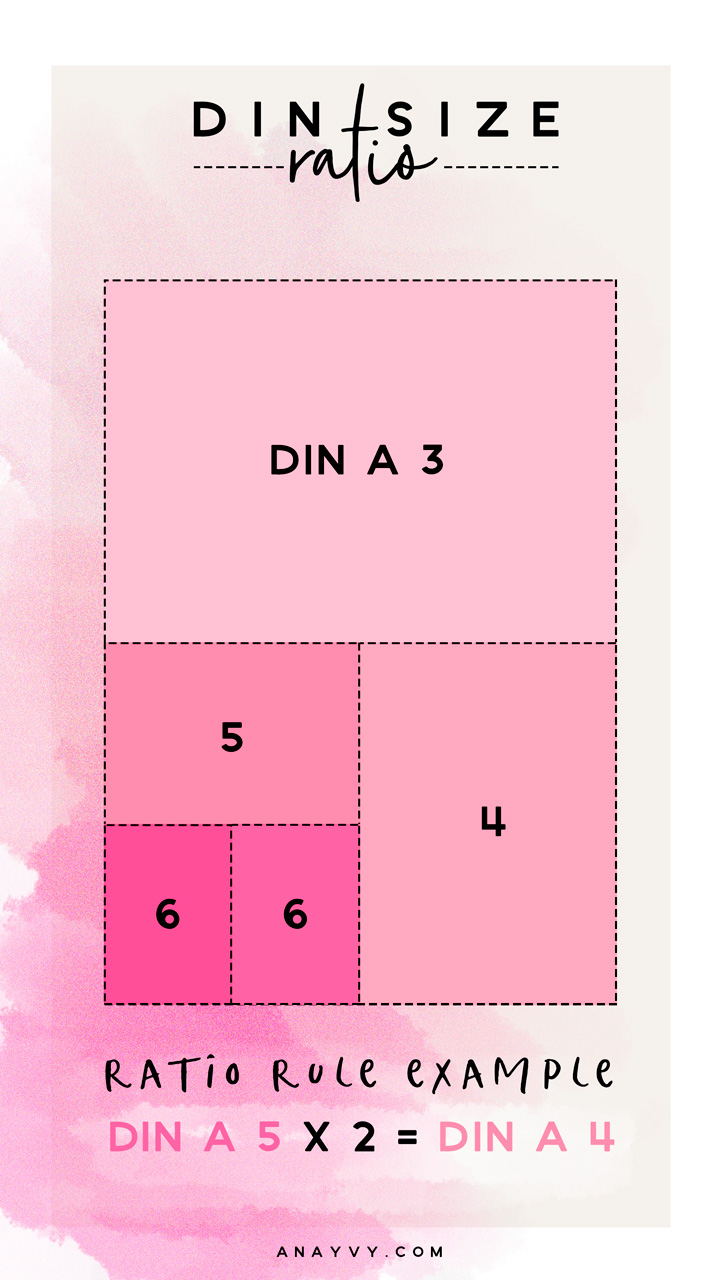
Basics: DIN sizes quickly explained | DIN A vs US LETTER
DIN size or US? – Creating layouts and designs is one of the most common parts of being a graphic designer.
Not only knowing layout techniques and rules but also paper and print sizes. This is the most important and basic knowledge for final client works and also for small projects and presentations. You need to know the ratio between the sizes and how they are built.
Different purposes of design also use specific sizes. For example the wedding industry: You have name cards, save the date cards, RSVP, menu cards and so on. Then we have other design sections like business cards or business letters which have defined sizes.
All these things are important to know if you’re creating a design for a client. Especially if you are from the USA and your clients are from Europe.
Mockups and sizes
Now you’ve finally created a layout in InDesign or Illustrator and you want to showcase your design on a mockup? This is the best way to put your design in the best surrounding so your client can better understand the final outcome. Easy peasy lemon squeezy.
But wait! You need to choose the right sizes for a realistic presentation and your mockup is not in US sizes!? Don’t panic. We will show you the basics of DIN sizes.

Here you can see the small but important difference between DIN A 4 and US LETTER
Most of the time the sizes are quiet similar so you can go with the ones you already have in a time rush situation.
If you’re not in a hurry, ask the author of the mockup if they could add the needed sizes.
Common problems
Since the USA is using the US sizes and measure with inch, there is much room for confusion when comparing the DIN sizes which are measured in cm / mm. I also heard from our US customer that they bought an envelope box in A5 in the US but measuring it, we realized the size wasn’t A5 at all.
Quick DIN size guide
So now knowing DIN sizes and US sizes are important, we can take a closer look.

DIN A sizes are always the half or the double of the following sized paper. If you fold a DIN A 4 paper into half you’ll get a DIN A 5 paper. The half of a A5 is A6 and so on.
DIN A 0
DIN A 0 is the biggest format of the DIN series. You’ll use it for painting, commercial poster and as printing paper in printing houses.
DIN A 1
DIN A 1 is the half of DIN A 0. You use it mostly for wall calendars, flipcharts or for painting. In my design studies we all used A0 and A1 artist paper and carried it around in huge and really annoying black folders. Maybe you’ve seen people with these kind of cases. They are mostly architects, designers or art students.
DIN A 2
DIN A 2 is something like a in-between size. It’s not so crazy big like A1 and A0 so you can handle it better it it’s still to big to carry around for too long. You can still use it like A1 for designs. Among this you’ll receive gift wrapping sheets in A2.
DIN A 3
DIN A3 is probably the very first size you will learn in preschool, because this is the paper size every small child will use for their art class. So at the beginning of school your parents probably bought you an artist folder in this size.
DIN A 4
A4 is the mostly used and known size. Forms, paper for your printer at home, every kind of letters, college books or magazines. This is the most common size you’ll get to see on a daily basis.

DIN A 5
For a long time A4 was the common size for magazines like GLAMOUR or JOY. But as time went by the printing houses and publishers realized, women don’t want to carry huge magazines with them. This was the beginning of the more handy magazines. A5 is also a size for small books, planners or flyers. This is also the beginning size for wedding papers.
DIN A 6
A 6 is right before the business card size the smallest size you work on, since everything else is quiet too small to function beside business cards, name cards, number cards or labels. You’ll find some small planners in this size for your handbag or dictionaries for travel.
Since DIN is a ratio like ISO we not only have DIN A but also DIN B, C and D. B and C is often used for envelopes, B is also used for books.
Stay tuned to our “explain size series” to learn all the other formats and sizes!
Do you have any particular questions regarding sizes? Write us a comment or leave us your question!



Fabian
I stumbled upon this article while searching for the difference between US Letter and DIN. I’m from germany so the US Letter Format confuses me – Did you know, that the DIN 0 Format is based on the assumption, that the area space of it is very close to 1 square meter? like its 0.99995 m². And from that format on, the other ones were made.
When I found that out, i thought is a really cool way to build up the standardized Sizes for formats 🙂